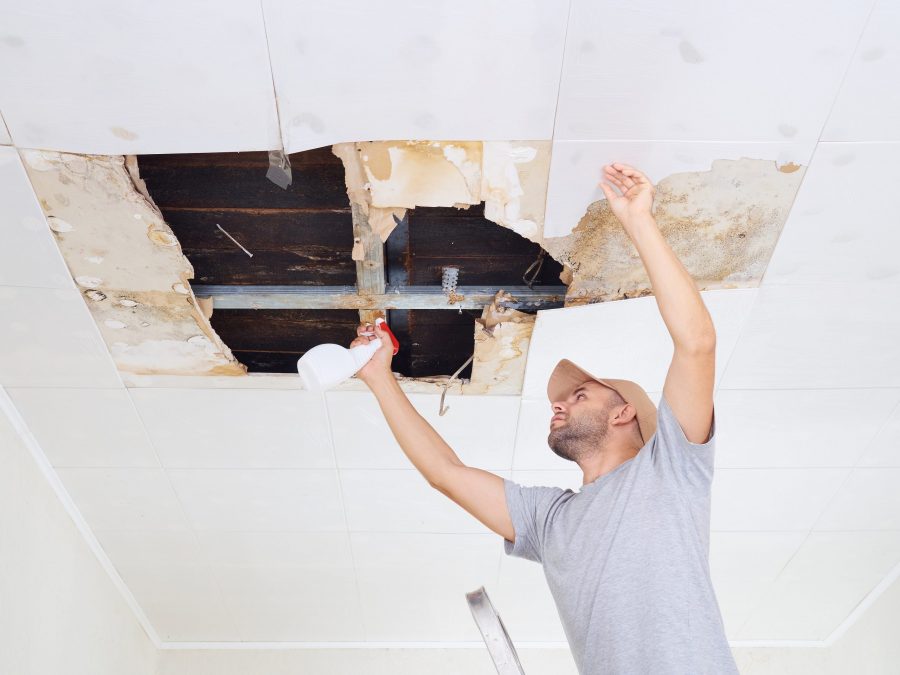The last thing that any homeowner wants is to learn that there is mold growing inside their home. However, living with mold can cause health problems and can also cause a lot of damage to a home, so it is important to have it properly removed as soon as possible if mold is present. Mold is a danger to both your home and your physical wellness. When you inhale it on a regular basis, you may experience a myriad of respiratory conditions that can be difficult to treat. Structurally, mold can ruin your home’s appearance and can lead to expensive repairs, especially if you’re trying to sell your home.
The attic is among the most common places in a home for mold to grow. Although you don’t spend much time up there, the moisture that accumulates can attract and spread mold to other places in your home. Before you know it, the damage could compromise the structural integrity of your property.
If you are unsure about the source of your attic’s mold, here are some ways to find out.
Check for Allergic Reactions
Mold is a known allergen that bothers many people. A lot of people are not exposed to mold for an extended period of time, so they may not even realize that they have a mold allergy or are sensitive to mold spores.
Pay attention to how you and your family members are feeling. If one or more people in your family begin experiencing prolonged allergy symptoms while spending time inside the house, such as sneezing, watery, itchy eyes, coughing, or hay fever, it is a good idea to have your home checked for mold growth.
Determine if Lung Issues Are Present
It is not uncommon for people living in a house with mold growth to experience a range of lung problems. These problems may include difficulty breathing and wheezing.
If a person has asthma, the presence of mold can make asthma symptoms worse and bring on asthma attacks. Lung issues and asthma complications can be very serious, so if you or a family member are experiencing these issues without any type of explanation, mold may be causing the problem.
Look for Moisture
Mold thrives on moisture and oxygen. So, if you have signs of moisture in your attic, chances are you have enough mold to cause a significant amount of damage. There are multiple species that can thrive in moist areas that range from pink and yellow hues to greenish-black. Check for abnormal and large shapes. Moisture leaks usually don’t take perfect form, leaving unsightly spores.
Leaking pipes in a home is not uncommon, and in some cases, a leak may not be caught right away. When this happens, all of the moisture from the leak creates a perfect environment for mold to grow and thrive.
Any time you have a water leak in your home, make sure that you hire a mold restoration company to do a thorough check of the area surrounding the leak to determine if any mold is growing.
Have an Inspection Done
Oftentimes, having a thorough inspection will make it easier to determine if you have attic mold. A roofing company may be able to spot gaps or holes in your roof that can allow rain and snow to make their way into your home’s interior. If they find openings in your roof, you need them patched immediately to also reduce the amount of oxygen and leaks in order to stop mold growth. A durable roof can keep your attic dry and free of harmful mold. You may need to replace your roofing with one that is made out of more durable materials depending on the climate you live in. The height, shape, and roofing materials all play a role in preventing moisture from damaging your property. Taking time to understand what roofing supplies will best suit your needs will prevent mold growth.
Use Your Nose
In some cases, you may smell mold before you can even see it. Mold gives off a very distinct odor, which many people describe as damp or musty. Some homes in areas of high humidity often smell damp due to the amount of moisture in the air, but if you suddenly notice a damp, musty smell in an area of your home that is not normal, contact a mold restoration service to discuss your options for removing it. Mold has a very distinct smell. If you go into your attic and notice a musty smell in addition to the previously mentioned clues, you’ve got mold. In many cases, the scent will trigger your gag reflexes. It may not be toxic, but you’ll want a professional opinion. The sooner you have someone come in and remove the mold, the better off your home and family will be. Remember to avoid removing mold without the help of a professional, as disturbing the mold can cause spores to be disbursed into the air.
Many people do not recognize the presence of mold or the dangerous consequences of living with it. It’s especially dangerous if it’s hidden in places you rarely access like the attic. When you do notice some of the signs of attic mold, it’s important to have it assessed and removed as soon as possible.
These tips help you recognize existing mold. If possible, regularly have your attic inspected, especially if you’re planning on selling your home or your family is vulnerable to respiratory-related issues.



